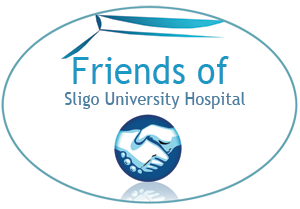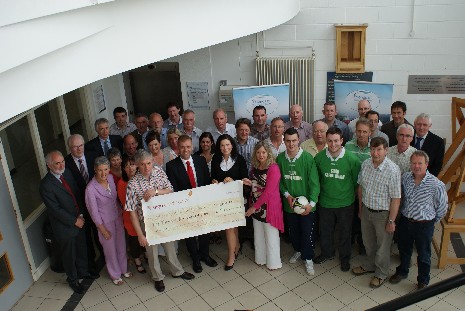The Friends of Sligo University Hospital along with the Dermatology Department @ Sligo University Hospital would like to extend their appreciation and congratulations to the Carpentry, Electrical and Toolmaking Apprentices from the I.T. in Sligo.

This group of energetic and highly motivated young people recently raised 9,890 euros towards the purchase of a mole mapping machine for the Dermatology Department in Sligo University hospital.
“Mole Mapping” is a relatively new device which facilitates mapping changes which might occur in a person’s moles. This assists greatly in the diagnosis of Malignant Melanoma . This system allows for video dermoscopy and clinical image documentation with sophisticated mole mapping features that capture consistent clinical pictures with follow up pictures to cover all the dimensions of skin cancer detections.
This system can help identify melanoma early, thus improving survival rates.
According to the National Cancer Registry there are more than 5,000 cases of skin cancer diagnosed in Ireland every year, over 400 of which is malignant melanoma-the least common but most dangerous type of skin cancer.
Selene Daly, Dermatology C.N.S. in Sligo University hospital says that we have had a 3.3 percent increase in incidence in Ireland between 2001 and 2005- current statistics from the National Cancer Registry of Ireland show that 598 cases of Melanoma were diagnosed in Ireland in 2005 compared to 459 cases in 2001.
Dermatologists agree that 90% of Skin cancers are caused by over exposure to UV light. Damage to the skin caused by the sun is permanent and it builds up which means that damage to the skin is added to the damage done in previous years. Skin cancer can take 20 to 30 years to develop with rates of skin cancer today reflecting sun damage accumulated from the 1970s and ‘80s.
However the good news is that skin cancers are preventable. Virtually all the risk comes from over exposure to sunlight and you can be ‘Sun Smart’ by following these practical sun safety measures:
- Wear protective clothing such as a shirt with sleeves and high collars, a wide brimmed hat that protects the ears, nose and back of the neck, and wearing sunglasses;
- Apply a lip balm with a high SPF to protect the lips;
- Apply a high protection sunscreen (at least SPF 15) 20 minutes before going outside and re-applying the sunscreen every two hours;
- Re-apply the sunscreen after getting wet, after perspiring , after towelling off.
- If at all possible, avoid being in the midday sun from 11am to 3pm.

